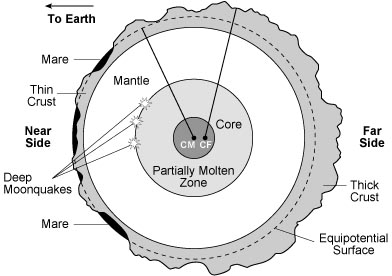Robert Farrar sent in this link on planet morphology at www.thunderbolts.info/wp/2015/12/20/the-antipodal-moon/ … which begins by saying mainstream is puzzled by the moon for a variety of reasons. For example, the near side crust is 60km thick and is overlaid by 3 to 5km of regolith. The far side is much thicker, some 100km thick and covered in 10 to 15km of regolith. It then goes on to pull apart past and current ideas on the moon, one by one – and expands the critique by looking at Mars and other rocky planets and moons. In an electric universe, we are told, such puzzles can be explained. The author of this piece is Andrew Hall. The inherent dipolar nature of electromagnetism from the subatomic scale to the cosmic is evidence of immense forces involving electricity in space. It creates and shapes not only planets and moons but stars and galaxies.

Some idea of mainstream views on the moon and how it is formed can be gleaned at http://phys.org/print370002623.html … which is about the Chinese mission to the moon – unmanned but sporting a lander, Yutu. Landfall was chosen for various reasons. One of these was a nearby crater that is apparently quite recent in date. The lander will explore the structure. A second reason is that the surface of the moon is covered in all that regolith, which restricts the lander from picking up evidence from the surface itself. They are not interested in the regolith as it doesn't come with a geological formation. It just litters the surface and could come from any part of the moon. Hence, they chose a place where a lava flow has erupted at some stage and the regolith is thin on the ground. The landing site came up trumps as the Chinese were able to study the actual surface rocks of the moon, which is what interests the geologists and astrophysicists. One puzzle they had put on the front burner was the existence of olivine (which forms early in planetary processes, it is alleged), in close association with titanium ilemenite (which forms much later in planetary processes, it is alleged). The fact that the olivine was found by Yutu to be iron rich has reputedly put that one to bed – but not quite. What can the EU people say about this?
